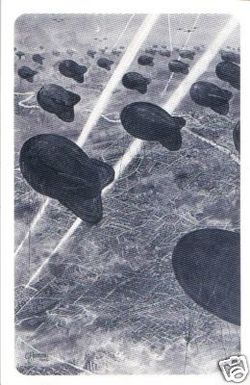 Submitted by Dick Martin, taken mostly from WW II magazine The following story was relayed to me by the late retired Navy Lt Cmdr Rick Paulson as it was told to him by Springfield native Dr. Ted Lindeman, the local dentist. Many Springfield citizens credit Dr. Lindeman for their flying interest and education. In many cases, they also credit Dr. Lindeman for their military careers as pilots. According to Rick, after completing a mission over Japan, Dr. Lindeman was flying his Navy Privateer (a navy version of the Army Air Corp B-24 Liberator bomber) back to his home base at Tinian in the Pacific Ocean when he flew over Nagasaki shortly after the atomic bomb had been dropped on it. As you might expect, he and his crew decided they wanted to see more, so Dr Lindeman took the plane in low to get a closer look. As Dr. Lindeman flew low over Nagasaki, his plane barely missed the cable on a barrage balloon, and he and his crew dodged a crash that may have been deadly for them. When Rick told me this story, I did not know what a barrage balloon was so I did some research. Barrage balloons are blimps held down by steel cables that are usually used to enhance air defense networks over beachheads and supply points. Some barrage balloons carried small explosive charges that would be pulled up against the aircraft to ensure its destruction. They are especially effective in protecting ground troops from enemy low-flying aircraft strafing. At this point of the war, the Allies had complete air superiority in the Pacific. One of the few defenses the Japanese had against low flying aircraft were devices like the steel cables held up by the balloons (blimps). Any plane coming in contact with the cables would be brought down very quickly. This was the situation in Nagasaki which Dr Lindeman found himself, nearly missing a barrage balloon cable as he flew over the city. Over 400 barrage balloons were used to protect key areas on the West Coast of the United States. The British used over 2000 barrage balloons in London during the Blitz which, after hitting the cables, took down over 60 German aircraft and destroyed 231 V-1 flying bombs. After the war, throughout most of the period when nuclear weapons were tested in the atmosphere, some surplus barrage balloons were used as tethered shot balloons for nuclear weapon tests.
0 Comments
Leave a Reply. |
Categories
All
Archives
October 2023
|